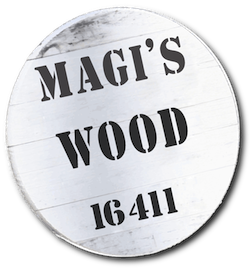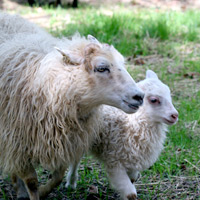Our Products
Sheep and Lambs
Periodically, we post an adult sheep list and the annual lamb list. Please go to the following link for those lists - Sheep & Lambs. Our new lamb list does not come out until after May when all the girls have birthed and we know who we will keep or sell.
We select for conformation, color, and pattern with the goals of improving our flock and presenting the best quality breeding stock for shepherds.
Fleeces
Each sheep produces a fleece twice a year. The Fall fleeces are the highest quality and most prized by spinners for their long shiny locks. All Icelandic fleeces are double-coated ---- baby-soft thel lies next to the skin and tough tog sweeps out toward the ground. The thel is used for fine lace and infant clothes, the tog for rugs and outer garments like boot covers, chaps, and jackets. Traditionally, Icelanders raise sheep for meat, so they may not select for wool quality. Consequently, Icelandic wool from Iceland may not be as silky and soft as North American bred Icelandic sheep.
Roving
Some fiber folk prefer to wash and process their own fleeces, but for those who prefer to start with washed and combed wool, there is roving. We sell both raw fleeces and processed wool. Icelandic roving is an easy spin and a dynamite felting wool. The felting speed caught my attention immediately. Only merino is faster.
Batting
When fleece is washed but not combed into long parallel strands, the fibers dry somewhat tangled, lofty and airy. This form is laid into handmade quilts, stuffed into eco-comforters or felted into thick fabric for making heavy garments and rugs.
Yarn
We have a portion of our best wool spun into lopi, a single-ply or double-ply yarn. We sell it by weight rather than length because it's difficult for the processors to predict how long each skein will turn out. The yarn is left in skeins or made into center pull balls. All of it is the natural wool color that came off the sheep. It does dye beautifully, the grays turning into heathered colors.
Meat
Icelanders breed sheep primarily for meat. It is tasty. They do not, however, waste any part of the sheep. Bones become sewing needles, decorative buttons or punch tools. Historically, even sinew was used for binding. Toward the end of the summer, as our ram lambs gain weight, we consider whether to keep them in the flock as sires or wethers (neutered rams), or send them to market. Usually, we have a small number of market lambs and a waiting list for buyers.




